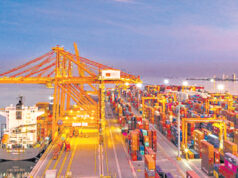Banks’ foreign currency loans increase in 2018 on higher capital requirements
FOREIGN CURRENCY LOANS granted by local banks rose as of end-2018 as foreign firms needed additional working capital and funds for big-ticket investments, latest central bank data showed.
Outstanding debts granted by banks’ foreign currency deposit units (FCDUs) ended at $16.589 billion last year, up by 7.9% from the end-2017 level of $15.374 billion. This is also higher than the $16.088 billion balance as of end-September, according to the Bangko Sentral ng Pilipinas (BSP).
“The said loan growth may be attributed to the customers’ higher working capital requirements and investment in plant or equipment, as well as banks’ more attractive financing terms, BSP Governor Benjamin E. Diokno said in a statement.
The central bank added that the higher loan portfolio came as disbursements grew faster than repayments.
FCDUs are bank units authorized by the central bank to conduct transactions involving foreign currencies, mainly by accepting deposits and handing out loans.
A fourth of the foreign debts were secured by firms in the towing, tanker, trucking and forwarding business, the BSP said. This is followed by merchandise and service exporters (18.1%); public utility firms (9.6%); and producers or manufacturers plus oil companies (4%).
Gross borrowings released totalled $64.9 billion last year, up by a tenth from 2017 given an “increase in funding requirements” for the local branch affiliate of a global bank. Meanwhile, loan payments also rose by 13%.
By tenor, 75% of outstanding foreign currency loans had medium to long-term maturities. Only a fourth came with repayment periods of below one year, which are worth $4.152 billion, data showed.
On the other hand, dollar and other foreign currency-denominated bank deposits also rose to $39.892 billion, 1.9% higher than the $39.194 billion as of December 2017 but did not match the pickup in loan disbursements. This led to a higher loan-to-deposit ratio of 41.6% from 39.2% a year ago.
This mirrors the trend for peso credit lines, where total loans grew by 13.6% to P10.076 trillion versus an 8.8% rise in bank deposits, which hit P12.764 trillion.
The Philippine banking system is seen to remain on solid footing despite a $412-million loan default left by embattled shipbuilder Hanjin Heavy Industries and Construction Philippines, who declared bankruptcy back in January.
BSP officials have said that the share of this loan to the total foreign debts granted by banks remains “negligible,” as the lenders remain liquid and armed with enough loan loss provisions. — Melissa Luz T. Lopez



